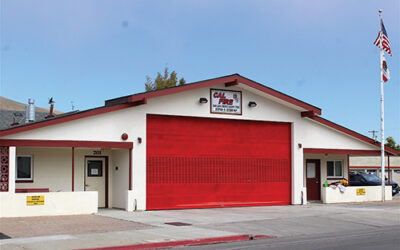Health programs were top of mind for County Supervisors recently when they approved items that filled vacancies on a key advisory board, and approved applying for millions in funding for various health and mental health related programs.
Behavioral Health Board
Supervisors voted to fill seats on the Behavioral Health Board, appointing: Hugo Balcazar, Donna Klein, Leslie Brown, and Andres Pille to fill vacancies left by Marcella Paric, Joyce Heddleson, TeaEster B. Higgins, and Christine Nichols.
Balcazar’s term is slated to expire on June 30, 2023; and the terms of Klein, Brown and Pille will expire June 30, 2024, according to a County report.
The Behavioral Health Board is an advisory body made up of 10-20 citizens with experience in the mental health field. The board is mandated by the State Health Department for agencies that receive funding.
Members’ experience is in the Behavioral Health field either as a professional, have a family member with behavioral health issues, or someone that has received such services themselves.
The Board “provides advice regarding the implementation of programs and services as well as evaluates effectiveness of those services within the community,” the County report said. “It also plays a role in educating the public on behavioral health issues and encourages community support throughout the county for development and implementation of effective behavioral health programs.”
Newbies Have Experience
The new board members bring a lot of experience to the table. Balcazar works in the field as executive director of the nonprofit, Council on Adolescent Mental Health, providing peer-to-peer counseling in the local schools, according to the report.
Balcazar said he hopes to improve existing mental health programs and “provide alternative mental health resources to the youth of SLO County.”
Klein works for Sierra Mental Wellness Group as a peer support specialist, the report said. She has experience with the mental health programs SLO County offers and was trained and worked at Transitions Mental Health, a non-profit group that contracts with SLO County to provide mental health services.
She “hopes to participate in decisions affecting SLO County’s mental health and drug and alcohol services, and to learn about and from key decisions involving mental health administration, implementation, and oversight.”
Brown is a retired SLO County administration staffer and has been trained in mental health administration. Brown “is looking forward to helping the department and the Board of Supervisors set priorities, address service delivery issues, analyze policy, and determine strategies to enhance mental health resources and services.”
Pille is the new representative for CenCal Health, which is required to have a seat on the County board. A Behavioral Health Community Integration Specialist, Pille is a licensed marriage and family therapist and has diagnosed and treated people with mental health issues, drug addictions and other, “co-occurring disorders.”
If readers would like to learn more about the SLO County Behavioral Health Advisory Board, see: www.slocounty.ca.gov/Departments/Health-Agency/Behavioral-Health/Behavioral-Health-Board.
Millions in Grants Available
The County could have a nice chunk of change to use helping those with mental health problems, if a grant comes through from the State.
Supervisors approved applying to the California Department of Health Care Services for a more than $7.59 million grant, covering 2023-27, for the “Behavioral Health Bridge Housing Program.”
The program would “provide operational and supportive services funding for bridge housing to provide immediate support to persons with serious behavioral health conditions that experience homelessness,” the County report said.
Money for the program comes out of the 2022 California State Budget (AB 179), which allocated $1.5 billion to the Department of Health Care Services for the bridge housing program, one of several undertakings the Newsom Administration took to address the homelessness problems plaguing California. It also came during a time when the State had a budget surplus of over $25 billion.
The so-called “bridge housing settings” are supposed to address “the immediate and sustainable housing needs of people who have behavioral health conditions including serious mental illness, and/or substance use disorder” compounded with being homeless.
This new housing program was designed to complement previous programs the State implemented. But the Behavioral Health Bridge Housing or BHBH provides “operational and supportive services to quickly expand bridge housing implementation and includes short-term — less than 90 days — and mid-term — 90 days to 2 years — shelter and housing, according to the County.
People in this situation got another boost with Senate Bill 1338 the Community Assistance, recovery and Empowerment Act or CARE Act, which was codified in the State’s Welfare & Institutions Code Book. Under this law, CARE Program participants get priority for any bridge housing funds through the BHBH Program.
SLO County has not yet begun a CARE Program and once it does, those CARE people will have to be prioritized for housing funding. SLO County has until Dec. 1, 2024 to start a CARE Program.
The BHBH Catch
There is of course a catch to all this funding. The BHBH Program ($1.5 billion) has two parts — non-competitive and competitive — with the first round being non-competitive funding — for a total of $907 million — of which SLO County is eligible for $7.59 million. That funding will cover the initial 4-year program.
But in Summer 2023 and Fiscal Year 2024-25 an additional $250 million ($500M total) will become available on a competitive basis with the BHBH Program accomplishments of each county being the deciding factor in who gets that money.
What’s This Money For?
According to the County, the BHBH Program grants have four main eligible uses:
• Bridge Housing. A minimum of 75% of grant monies have to be used for short-term and mid-term housing in places like motels, pallet shelters, tiny homes, and navigation centers; for rental assistance; funding for places like assisted living facilities; and housing navigation.
• Bridge housing start-up and infrastructure;
• Bridge housing outreach and engagement; and,
• County Health Agency BHBH Program “implementation” (administration costs).
The County expects to hear back from the State sometime in June on whether they’ve been granted the money to start the BHBH Program.
If the money is granted, the County expects to go out for bids to find a company to come in and run the BHBH Program.
County Wants More Home Visits
SLO County Health Department is also seeking money to expand a program that brings health professionals into people’s homes to assist with various health matters.
Supervisors approved allowing the County Health Agency to apply for “California Home Visiting Program” allocations for this fiscal year (2022-23) and through FY 2027-28.
The County is seeking $440,000 for this fiscal year (July 1, 2022 to June 30, 2023) and $2.64 million for the next 2-6 years. The money is for “expansion, planning, and/or special support activities to increase the number of families participating in the three evidence-based home visiting,” according to a county report.
Once again this is a relatively new program hatched by the State when it was flush with money. “In December 2022,” the report said, “the California Department of Public Health made available $33.7 million for local assistance to health jurisdictions to expand home visiting services” under the State’s “Home Visiting Program.”
The program involves trained professionals visiting homes during pregnancies and in the first few years of a baby’s life. It’s designed to “improve the lives of children and families,” reads the County report. “Giving children a solid start in their first few years of life increases the opportunity for a brighter, more prosperous future.”
The program is aimed at “overburdened families who are at risk for Adverse Childhood Experiences, including child maltreatment [abuse], domestic violence, substance use disorder, and mental health related issues. Home visiting gives parents the tools and know how to independently raise their children. It is a preventive intervention focused on promoting positive parenting and child development.”
But what do these home visits do? “Families can ask questions, discuss concerns, and gain valuable information,” the report said. “Home visitors build relationships as they provide services tailored to each family’s needs.”
These needs include: teaching parenting skills and modeling parenting techniques; providing information on topics like safe sleep positions and maternal depression; giving referrals for drug abuse, family violence, and maternal depression.
It will also screen kids for developmental delays and facilitate interventions; promote early learning in the home; emphasize positive parenting; and “building a language-rich environment.”
It will also screen “pregnant and postpartum women for perinatal mood and anxiety disorders to provide education, support, and link to appropriate professional services and providers.”
The SLO County Public Health Home Visiting, is a branch of the Maternal Child Health division, and operates this evidence-based home visiting program under the name, “Healthy Families America” or HFA.
The program is for those eligible for and enrolled in the “California Work Opportunity and Responsibility to Kids” or CalWorks Program, which is under the County Department of Social Services.
What’s the Money For?
If the County gets this additional funding it will be able to expand the home visiting program to more at-risk families, according to the report.
The total grant monies the County is seeking over the 64-month period is $3.08 million — that’s $440,000 for this year, and $528,000 for each of the next five years.
The first year the money will go towards salaries and benefits ($104,000), services and supplies ($321,000), and “indirect costs” ($21,000).
In subsequent years the breakdown is $318,000 for salaries and benefits; $137,000 for services and supplies; and $72,000 for indirect costs each year.


